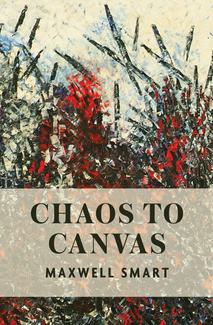"You Are the Only Hope"
Chaos to Canvas
I remember my mother repeated to me many times, “Try to save yourself.” And then, “I don’t know how. I can’t help you, as I myself don’t know what to do. I know we are doomed to die. Try to walk away when you’re outside. If there is any opportunity you might have outside, just try to save yourself. Just be strong, my son, and take a chance, and God will be with you. If you won’t take this chance, you will not survive. Try, my son. I am helpless, but I know that you’re capable. You can do it. Just try. There is probably nobody left from our family except for us. If you follow me, it will be the end of our family. You are the only hope.”
My mother made me feel important. She made me feel like an adult, a person on whom you could depend, like a man and not a child. She continued talking quietly and constantly. She was sure that if I walked away, I would survive, and if I remained with her, I would die. She urged me to save myself and gave me the courage I needed to continue living. During the entire war, and throughout all the unimaginable hardships I endured, her words were my hope, my security and my strength to continue living. Her advice made me strive to save myself and gave me the inspiration that I needed.
Later, when I was alone in the woods, I used to talk to God. I screamed at him in my mind. When I was in a horrific situation and needed to express my pain, I appealed to God. I wanted him to help me when I needed help: when I was cold and hungry, when I was wet and living outside in the open during winter, when I was sick with a cold or a fever or when I was injured. Who was there for me to complain to? Most people have their mother, father, a member of their family or a friend. I had no one. I had only God. Sometimes I spoke loudly, hoping he would take notice. I would raise my voice as I would with my mother when I was angry. The difference was that my mother used to listen and help. God simply listened, but I felt that at least I had someone to cry to about my pitiful existence. I was extremely angry with God when I was wearing rags and was alone and starving in the cold. God is a witness to my suffering.
The next day, my mother and sister and I were forced to walk to an awaiting truck — like cattle being transported for slaughter. Not knowing where we were going, we were panicking. Hundreds of people and children were there, and the police were shouting and shooting. People were hysterical as they were falling over each other and were being separated from their families. We could not climb onto the trucks quickly enough, so we were violently pushed, kicked and beaten with clubs. I witnessed two policemen pick up a child by an arm and a leg as she struggled to climb onto the truck and throw her in like a bag of garbage.
I clearly remember Zonia’s arms around our mother. Then my mother pushed me away from boarding the truck and insisted, “Now is your chance to run.” I knew I could not run because if I did, I would be shot. But I stripped off my armband and began walking slowly toward the nearby bridge. The bridge over the Strypa, so familiar to me, split the city in half. It was not a large bridge, possibly fifty or sixty feet long. It was made out of wood and was only wide enough for people, horses and wagons to cross. I started to walk across and was approximately halfway when I saw an SS officer walking from the opposite side. Immediately, I froze and thought, What do I do now? Should I continue walking?
Chaos to Canvas (Traduction française à venir), Maxwell Smart
Les mémoires réédités de Maxwell Smart sont désormais en vente chez HarperCollins sous le titre de The Boy in the Woods. Consultez leur site pour vous procurer un exemplaire.
Dans la ville de Buczacz (Pologne), Maxwell, 11 ans, joue dans les ruines d’anciens châteaux et mène une vie tranquille entourée de sa famille jusqu'à l'été 1941, date à laquelle les nazis envahissent et anéantissent son enfance à jamais. Maxwell échappe de justesse à la déportation et à une mort certaine, et se retrouve bientôt tout seul dans les bois glacés, se cachant des groupes de nazis et de leurs collaborateurs ukrainiens errants. Seul et désespéré, effrayé et affamé, Maxwell doit compter sur la bonté d'un fermier ainsi que sur sa propre ingéniosité et son imagination pour survivre. À travers le récit poignant, mais néanmoins stimulant du parcours qu’il narre dans Chaos to Canvas, Maxwell décrit avec éloquence comment un petit garçon qui dépendait de sa famille s’est transformé en un adolescent qui s’est battu pour survivre et, enfin, un homme qui s’est trouvé dans la vie grâce à l'art, par-delà la guerre.
Introduction de Carol Zemel
- En bref
- Pologne
- Clandestinité
- Camp de personnes déplacées (Autriche d’après-guerre); Roumanie
- Projet des orphelins de guerre
- Immigration au Canada en 1948
- Adaptation à la vie canadienne
- Œuvres d’art de l’auteur
- Ressources éducatives disponibles: Maxwell Smart
À propos de l’auteur

Maxwell Smart est né en 1930 à Prague en Tchécoslovaquie (aujourd’hui en République tchèque). Après avoir survécu seul à l’Holocauste, livré à lui-même, Maxwell immigre au Canada en 1948, à l’âge de dix-sept ans, dans le cadre du Projet des orphelins de guerre. Il s’est installé à Montréal où, devenu un peintre à succès, il a ouvert sa propre galerie d’art en 2006.


